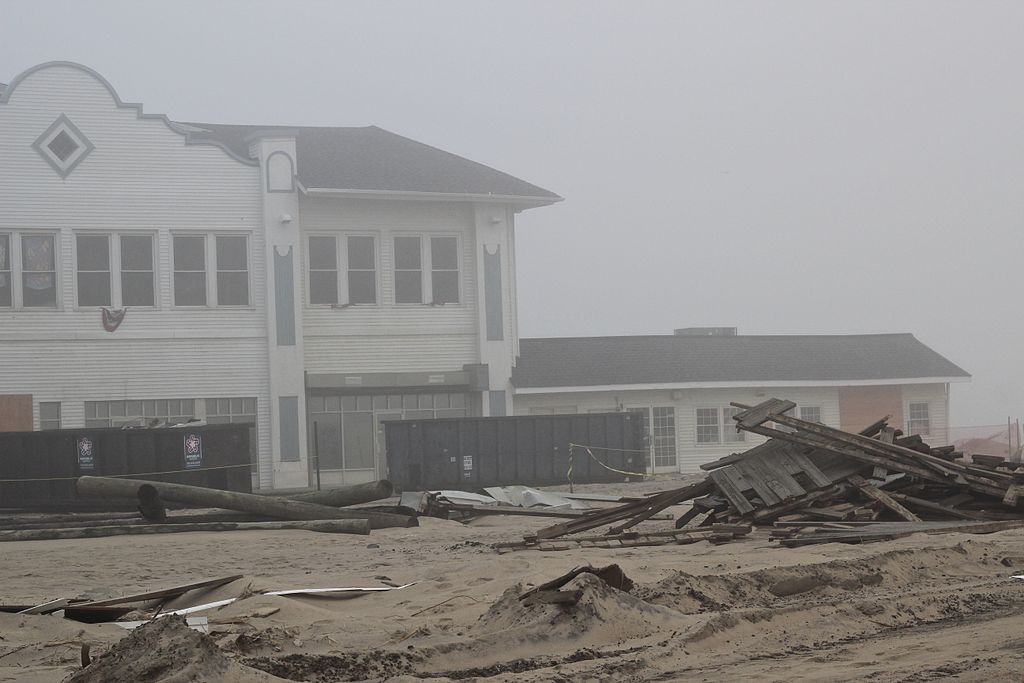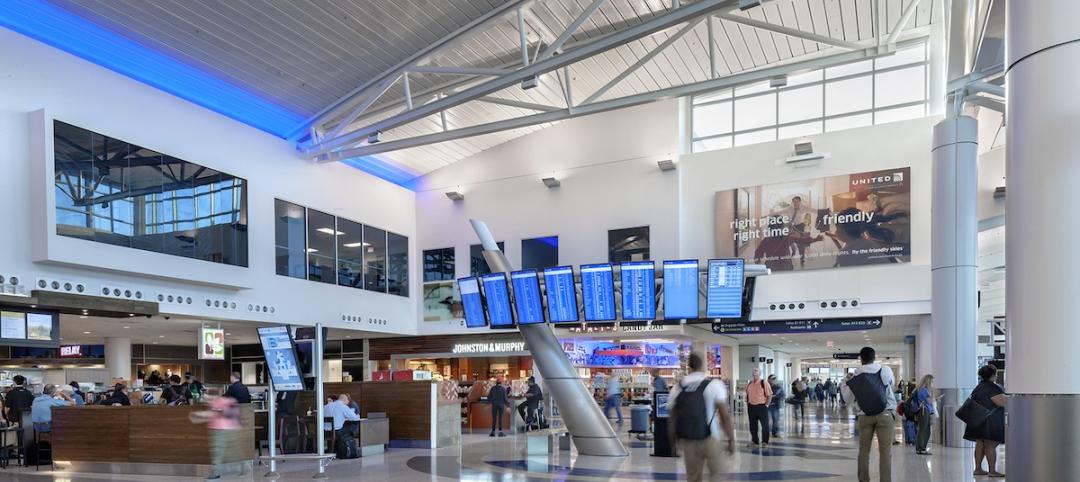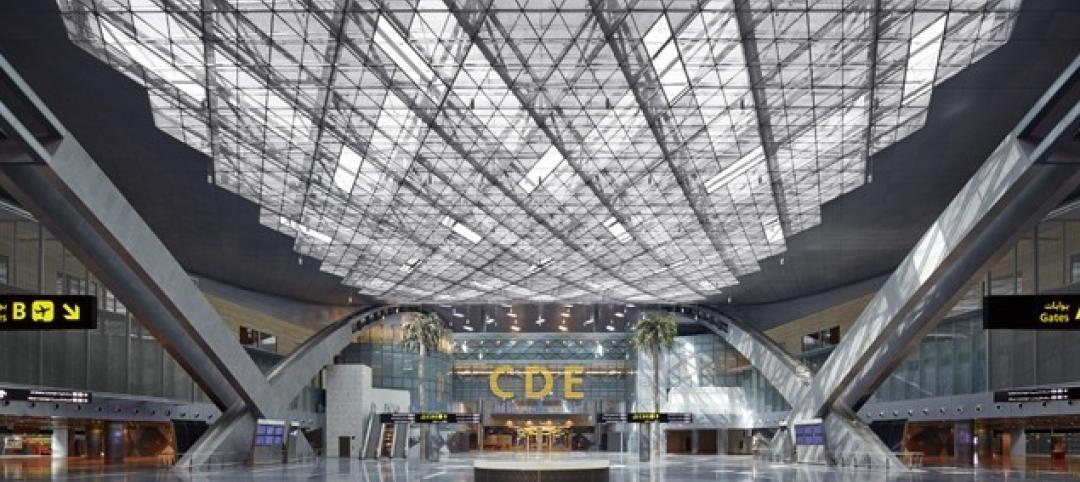Leaders of America’s design and construction industry – along with building owners and operators - for the first time have agreed to promote resilience in contemporary planning, building materials, design, construction and operational techniques as the solution to making the nation’s aging infrastructure more safe and secure.
CEOs of almost two-dozen leading design and construction industry associations with more than 700,000 members generating almost $1 trillion in GDP today used the occasion of “Building Safety Month” to issue a joint statement on resilience, which can be found here.
The statement was unveiled at a press conference at the National Building Museum, where a major exhibition titled Designing for Disaster presents design and building solutions for disaster mitigation, opened May 11.
“We recognize that natural and manmade hazards pose an increasing threat to the safety of the public and the vitality of our nation,” reads the statement, in part. “We further recognize that contemporary planning, building materials, design, construction and operational techniques can make our communities more resilient to these threats.”
The CEOs committed their design and construction sector organizations to significantly improve the resilience of the nation’s entire built environment through research into new materials, construction procedures and other methods to improve the standard of practice.
Among other things, they also committed the industry to educating itself through continuous learning; to advocating for effective land use policies; to responding to disasters alongside first responders; and to planning for future events, with a strategy for fast recovery.
“Resilient design places architects at the center of the solution, with particular emphasis on the private, non-governmental sectors," said American Institute of Architects CEO Robert Ivy, FAIA. “I would like to congratulate my fellow leaders in the design and construction sector for joining together to make sure resiliency is not viewed as just a fad but remains front and center in our efforts moving forward.”
In addition to the AIA, here is a list of organizations signing onto the joint statement on resilience:
American Council of Engineering Companies
American Planning Association
American Society of Civil Engineers
American Society of Interior Designers
American Society of Landscape Architects
American Society of Plumbing Engineers
ASHRAE
Associated Builders and Contractors
Associated General Contractors of America
Building Owners and Managers Association
International Code Council
International Interior Design Association
Lean Construction Institute
National Association of Home Builders
National Institute of Building Sciences International Facility Management Association
National Society of Professional Engineers
Royal Institute of Chartered Surveyors
Urban Land Institute
U.S. Green Building Council
About The American Institute of Architects
Founded in 1857, members of the American Institute of Architects consistently work to create more valuable, healthy, secure, and sustainable buildings, neighborhoods, and communities. Through nearly 300 state and local chapters, the AIA advocates for public policies that promote economic vitality and public wellbeing.
Members adhere to a code of ethics and conduct to ensure the highest professional standards. The AIA provides members with tools and resources to assist them in their careers and business as well as engaging civic and government leaders, and the public to find solutions to pressing issues facing our communities, institutions, nation and world. Visit www.aia.org.
Related Stories
Airports | Jul 28, 2015
Plans to make over New York’s aging LaGuardia Airport are revealed
The complete redesign, devised by a panel of experts, would unify terminals, relieve ground traffic congestion, and install state-of-the-art amenities.
Airports | Jul 22, 2015
MUST SEE: JFK airport taps Gensler to design terminal for animals
Pets can enjoy luxurious spa and grooming services before being transported directly to their flight from the terminal.
Airports | Jul 1, 2015
FIRST LOOK: JetBlue opens sprawling green rooftop at JFK International Airport
The 4,046-sf rooftop includes landscaped green spaces, seating for 50 people, 400-sf children’s play area, and a 400-sf dog-walk area.
Sponsored | Airports | Jun 5, 2015
Exposed glulam framework offers quiet complement to Jackson Hole airport’s mountain backdrop
A three-phase expansion and renovation, which began in 2009, nearly doubled the size of the aviation hub; the only one located in a national park
Airports | Apr 21, 2015
Trends driving airport construction
Upgrades to aviation infrastructure have not kept pace with the increase in airport traffic or even at a level sufficient to accommodate the life cycle of our many dated terminal facilities. Until now.
Airports | Feb 6, 2015
Zaha Hadid-designed terminal in Beijing will be world’s largest
The terminal will accommodate 45 million passengers per year, and will be a hub for both air and rail travel.
| Jan 2, 2015
Construction put in place enjoyed healthy gains in 2014
Construction consultant FMI foresees—with some caveats—continuing growth in the office, lodging, and manufacturing sectors. But funding uncertainties raise red flags in education and healthcare.
BIM and Information Technology | Dec 28, 2014
The Big Data revolution: How data-driven design is transforming project planning
There are literally hundreds of applications for deep analytics in planning and design projects, not to mention the many benefits for construction teams, building owners, and facility managers. We profile some early successful applications.
| Dec 28, 2014
AIA course: Enhancing interior comfort while improving overall building efficacy
Providing more comfortable conditions to building occupants has become a top priority in today’s interior designs. This course is worth 1.0 AIA LU/HSW.
| Dec 28, 2014
The future of airport terminal design: destination status, five-star amenities, stress-free travel
Taking a cue from the hospitality industry, airport executives are seeking to make their facilities feel more like destinations, writes HOK's Richard Gammon.















